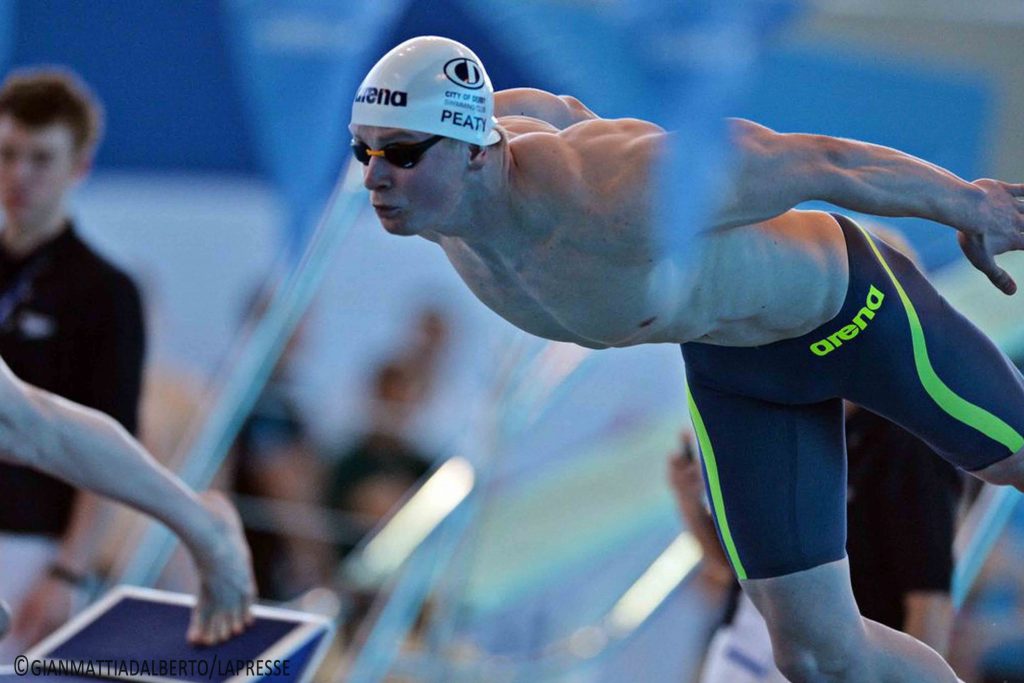At one end of the pool at Loughborough University the digital clock states Welcome To The Pool Of Dreams.
At the other end hang banners detailing the names of Loughborough swimmers who have competed at the Olympics.
In the pool are some of Britain’s hopefuls aiming for success at the World Championships in Kazan this summer.
Among them are Fran Halsall, the 2014 European and Commonwealth champion and former world medallist.
Also there is Adam Peaty, a 20-year-old who did not so much announce himself on the international stage in 2014 as crash bang wallop on to it.
The breaststroke specialist won six golds and one silver medal over the Commonwealth Games and European Championships last summer while also setting a new world record of 26.62secs in the 50m breaststroke.
There were three silver medals at the world short-course titles in Doha last December and at the time of writing he tops the rankings over 50m and 100m breaststroke.
Resplendent in a cap bearing the words ‘Made In Water’, he is overseen by coach Mel Marshall, a former world, European and Commonwealth medallist whose name appears on those banners.
A notable part of the session sees Adam do stand-ups – 4x100m breaststroke at maximum speed with no swimdown in between, the lactate building each time.
After the second he is bright red, his eyes closed and he is blowing.
When he has completed the fourth all colour has drained from his face.
Where does that session rank in terms of physical demands?
He grimaces: “That is one of the hardest.
“You can’t naturally get any faster, your body has already been pushed to the limit.
“It’s harder to do grueller sets – 10x100s, 10x75s, 10x50s – just because your body is already knackered.
“Those sets you need to be about 110% velocity and it’s harder to get up there.”
Sitting on poolside before heading off to a gym session, both Adam and Mel offer insights into the content of their training and specific areas of focus.
Adam says: “We do a lot of holding the streamline phase, that is the most important phase in breaststroke. It is where most of your power is going to be pushed out into.
“You need to make sure you are as flat as possible.
“We do a lot of that.
“Also keeping your hips nice and high. Working that kind of flexibility on the kick.”
For Mel there is an emphasis on a patient approach while the swimmer works on the components of the stroke.
“I think for breaststrokers it is just slow stuff. So kick with your pullbuoy in between your legs and then spending time with your snorkel and your head down, just getting that feel on your feet.
“Taking time to get to know your stroke – slowly – and the feel at the front and the feel at the back so that when those hands and those feet align – that to me is the difference between the good ones and the great ones.
“Because they are all finishing their kick when they are in the streamline position, the world-class swimmers.
“So just taking your time to get to know your stroke really.”
